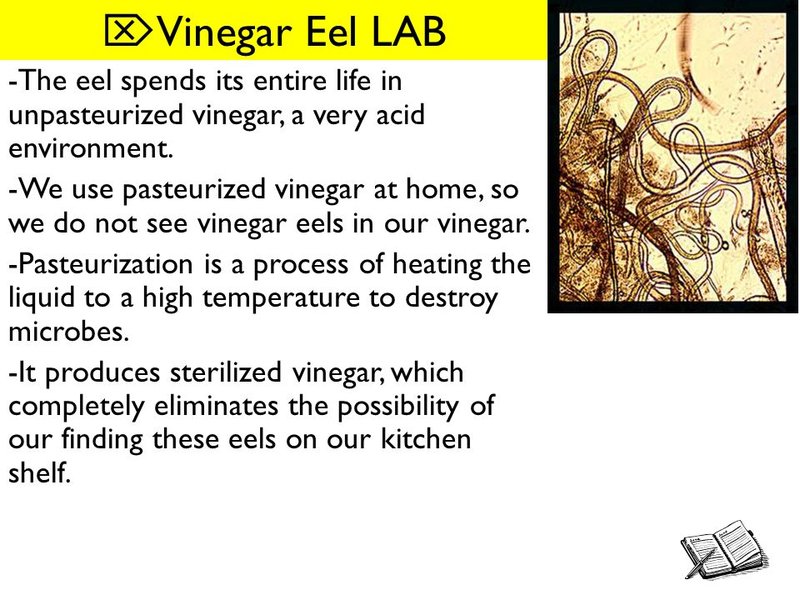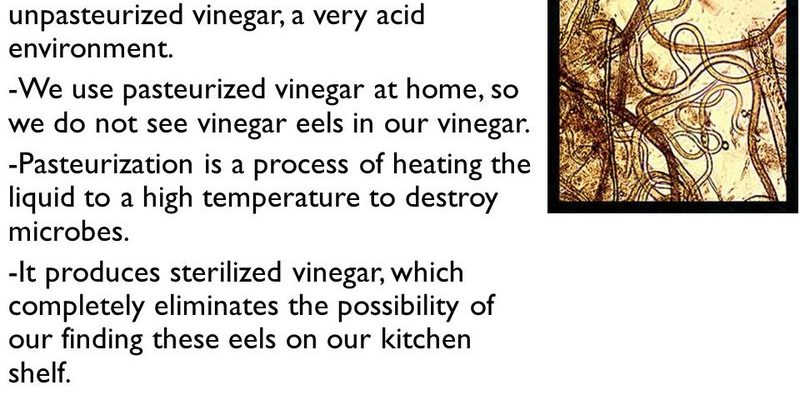
Vinegar eels, known scientifically as *Turbatrix aceti*, are actually nematodes. These little guys are harmless to humans and play a role in breaking down organic materials. If you’ve ever left a jar of vinegar open and spotted the slight cloudiness or movement, you may have seen these eels in action. Enthusiasts and researchers are increasingly curious about their lifespan, reproduction, and potential uses in various fields. It’s like a hidden universe waiting for discovery!
What Are Vinegar Eels?
To really understand vinegar eels, we first need to explore what they are. As mentioned, they are nematodes, or roundworms, typically measuring about 1 to 2 millimeters long. You might be wondering how something so small can be so important. Well, vinegar eels thrive in environments rich in organic matter, especially in fermented products like apple cider vinegar. They feed on the bacteria that develop in these substances, essentially acting as nature’s clean-up crew.
They’re often found in vinegar because that’s where their favorite food lives. Think of it like finding a buffet in your favorite restaurant! Vinegar contains acetic acid, which creates an ideal habitat for the bacteria that vinegar eels love to munch on. Without these eels, our fermented foods would look and taste quite different. So, their role is not just an extra layer of “eww” in your vinegar; they’re vital players in a much larger ecosystem.
Can Vinegar Eels Be Kept in Captivity?
Absolutely! Keeping vinegar eels in captivity is a fun and informative endeavor. It’s pretty straightforward, too, making it a great option for beginners. If you decide to keep some at home, all you need is a clean container, aged vinegar, and some patience. It’s like setting up a mini aquarium for your new squiggly friends.
A few things to consider: first, make sure your container has enough space for these eels to swim around. They’ll thrive best in room-temperature vinegar, but don’t overdo it; too much heat can harm them. Also, you should occasionally feed them. Adding a small amount of fruit, like a slice of apple or a bit of bread, can give them the nutrients they need to flourish.
There are also some common challenges. For instance, if your container becomes too cloudy, it might indicate an overflow of bacteria or food. In that case, just perform a partial water change or add more vinegar to balance things out. Keeping vinegar eels can be like having a quirky pet; they require attention, but the rewards are worth it!
Studying Vinegar Eels: Why Bother?
You might be thinking, “Why should I care about studying vinegar eels?” Good question! Understanding these tiny creatures can lead to insights in various scientific fields, from ecology to microbiology. They serve as a model organism for studying nematodes, which is important in understanding how many species interact with their environment.
One interesting aspect of vinegar eels is their reproductive habits. They reproduce by parthenogenesis, which means females can produce offspring without needing a male. This could provide fascinating insights into how species thrive in isolated environments. Plus, the vinegar eel’s simple anatomy makes them easy and cost-effective to study in labs. Researchers can observe their life cycles, behaviors, and responses to various stimuli—kind of like a laboratory science fair project!
Moreover, if you’re interested in fermentation processes, vinegar eels can teach you about the role of microorganisms in creating the foods we love. By studying these eels, we can learn more about the roles that similar organisms play in our diets and ecosystems. In essence, they’re more than just little wigglers in a jar; they’re tiny ambassadors of a much larger world of science.
Farming Vinegar Eels: Is It Possible?
Farming vinegar eels is an intriguing idea! While it might not be the same as farming fish or crops, it’s entirely feasible within a controlled environment. If you’re considering it, you’ll find that it mostly revolves around creating the right conditions for growth. In essence, you’re building a small ecosystem that can sustain itself, which can be both rewarding and educational.
You’ll want to start with a larger container, as this can provide more stability for your eels. A 5-gallon bucket can work well. Add a mixture of aged vinegar and distilled water to keep the acidity levels appropriate. Remember to monitor the temperature and keep it consistent, as vinegar eels thrive best in 68°F to 75°F (20°C to 24°C).
As you farm your eels, think about what you’re trying to achieve. Are you looking to study them? Use them for fishing bait? Or perhaps even as a unique pet? Knowing your end goal will help you decide how to manage your eel population. Just remember to keep an eye on your water quality, and don’t forget to feed them with occasional organic matter to keep their ecosystem balanced.
Challenges of Keeping Vinegar Eels in Captivity
While keeping vinegar eels can be a rewarding experience, there are challenges you might encounter. One common issue is overpopulation. If you’re not careful, your little population can explode, leading to water quality issues and reduced health for the eels. To tackle this, you can occasionally harvest some eels for study or even to share with other enthusiasts.
Another challenge is maintaining the right environment. Changes in temperature or acidity levels can affect your eels significantly. Monitor their habitat closely—if they start to congregate at the surface or display lethargic behavior, that might be a sign of an unhealthy environment. Regularly testing your vinegar’s pH level can help, ensuring the balance stays optimal for their growth.
You might also deal with pests in your setup, such as other microbes or unwanted organisms. Regular cleaning and good practices can mitigate this. Just like in any farming endeavor, staying vigilant can make all the difference in maintaining your vinegar eel population.
Where to Learn More About Vinegar Eels
If you’re interested in deepening your knowledge about vinegar eels, there are plenty of resources out there. Local libraries or online databases often have books and articles related to nematode biology. Websites from universities often offer research papers or guides on keeping vinegar eels. Joining online forums or local clubs can introduce you to fellow enthusiasts who share your passion.
YouTube also has some great tutorials on how to set up a vinegar eel habitat. Watching someone else’s successes and failures can provide insights that text alone might not convey. Reading blogs or articles written by experts in the field can give you practical tips that make your vinegar eel farming more successful.
Whether you’re a curious beginner or looking to become a vinegar eel expert, the world of these fascinating creatures is waiting for you to explore. With each tiny squirm and wiggle, there’s something new to discover!
In summary, vinegar eels offer a unique glimpse into the world of microorganisms and their significant roles in our ecosystems. When kept in captivity, they can be studied for their remarkable biology and possibly even farmed for various purposes. So why not jump in and see what you can uncover in the microscopic realm of vinegar eels? Who knows what exciting discoveries await!

